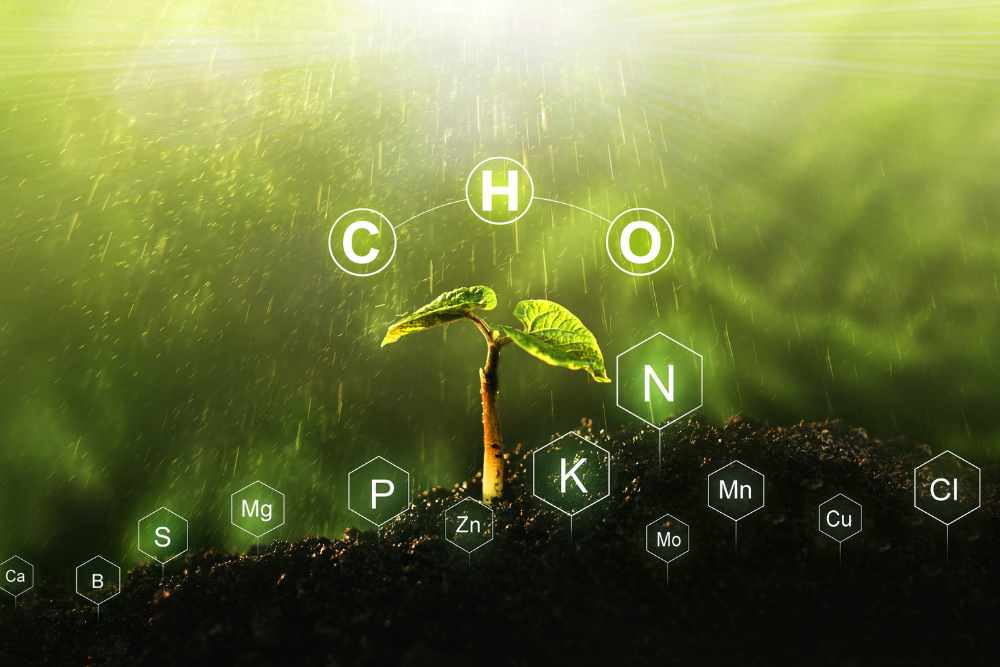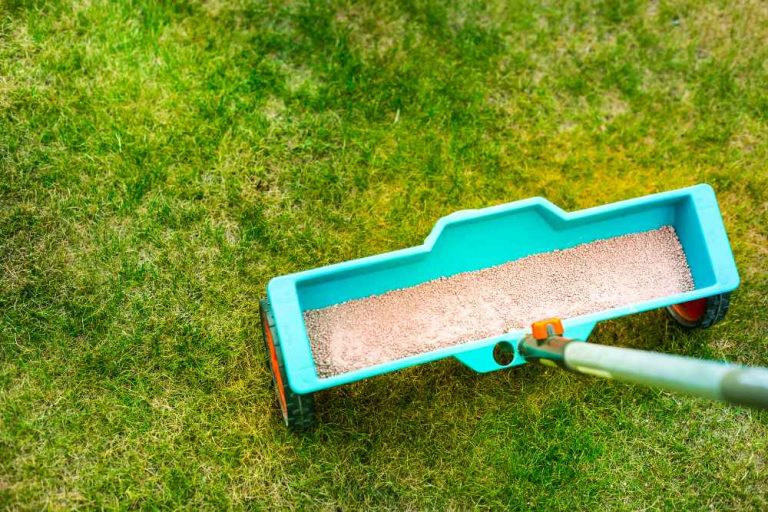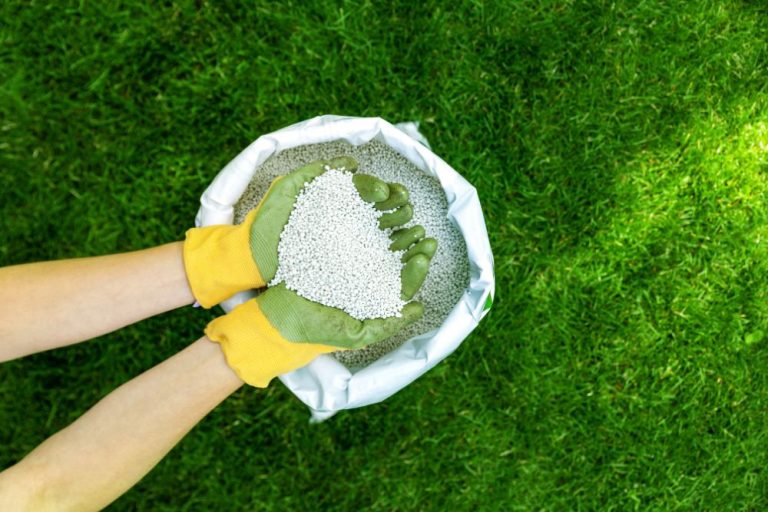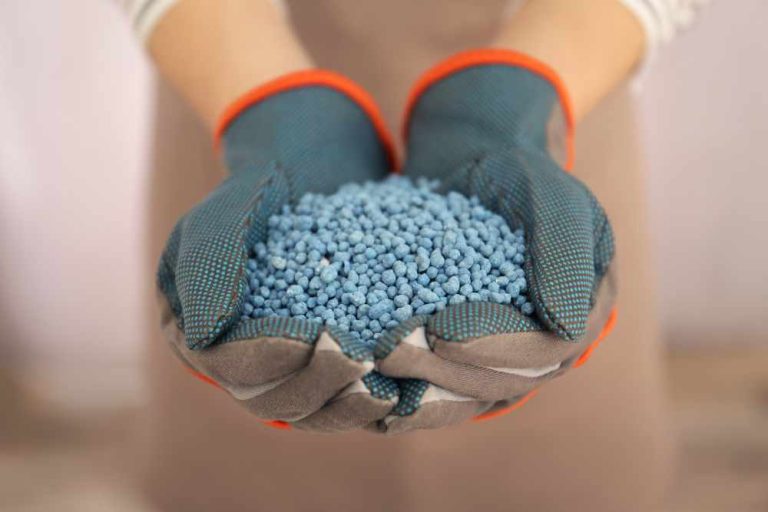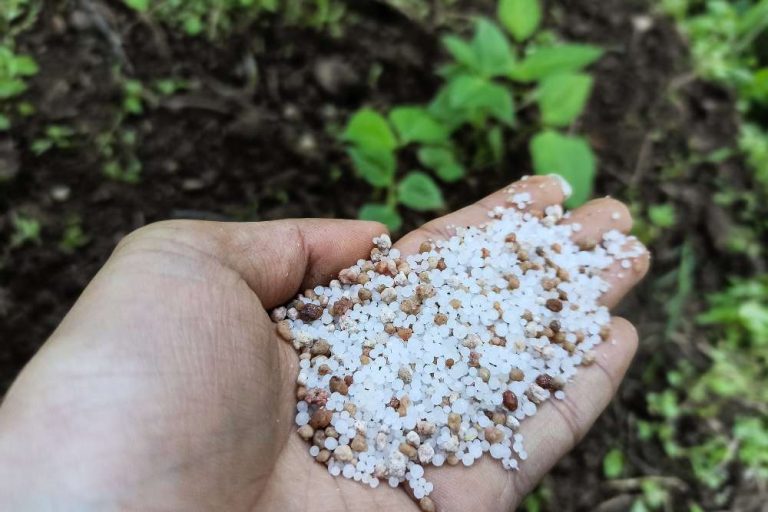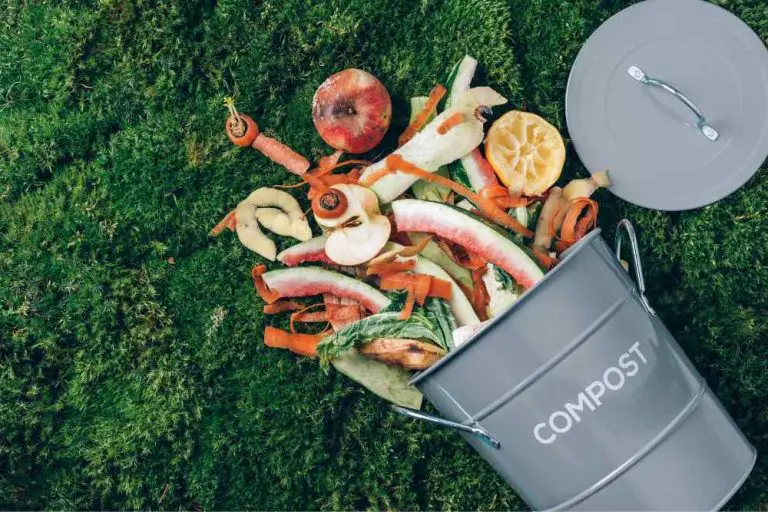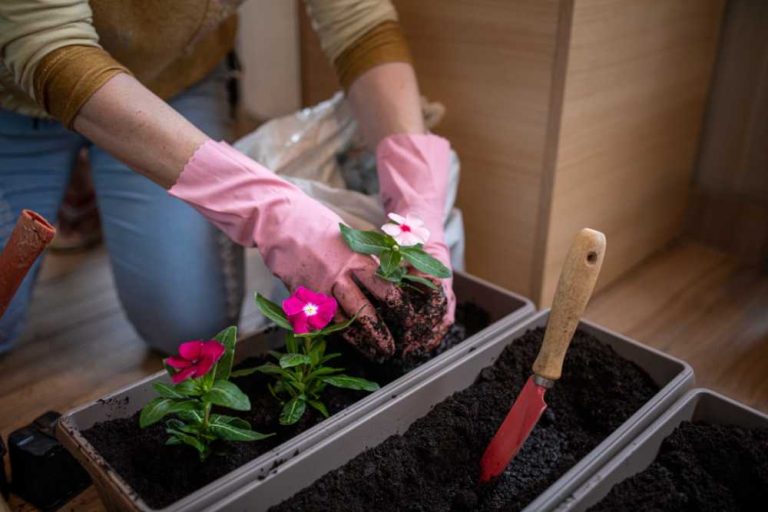Vegetable Fertilizer Guide for Beginners: A Comprehensive Guide for Nutrient Management
If you’re a vegetable gardener, you probably have a lot of vegetables growing in your garden. How do you remember when to fertilize which vegetables? Is it necessary to fertilize all veggies at the same time? Using this detailed vegetable fertilizer guide, you can easily select the correct fertilizer for your vegetable crop.
When it is possible, we always advise you to use organic fertilizers. Nitrogen allows plants to create more chlorophyll, causing leaves to grow quickly. Phosphorus promotes root development as well as bloom size and quantity.
While potassium has several functions, including disease prevention, root development, and increased photosynthesis. All of these elements are crucial throughout the life of most vegetables. Sulfur, calcium, and magnesium are examples of secondary macronutrients. Micronutrients such as iron and copper are required in considerably smaller quantities.
Adding nutrients that are not required can lead to nutrient shortages and an imbalance of nutrients. Nobody can tell you what your soil requires unless it has been tested by an analytical laboratory.
Tips For Fertilizing Vegetable Plants
- Soil test by using Soil pH Test Kit – Perform a soil test in the vegetable garden at least once every two years to better understand the soil quality and nutritional qualities. Then, precise data on nutrients deficient in the soil and how to modify them will be provided.
- Always follow label instructions – Each fertilizer type and variety requires a varied rate of application. Carefully read the package label and follow the instructions. Skipping this step can result in plant burn, which can result in stunted growth or a dead plant.
- Side dress the fertilizer – Granular fertilizer should always be applied 4 to 6 inches away from the plant’s base. This prevents the plant roots from coming into direct touch with the fertilizer.
- Don’t feed before the rain – Heavy rains can wash away fertilizer and damage water reservoirs. Wait till the weather is clear before applying fertilizer.
- Avoid overfeeding – When it comes to fertilizing vegetable plants, too much of a good thing can be harmful. Overfertilized vegetable plants begin to use the extra nutrients, growing only larger stems and foliage. When it comes to vegetable plants, feeding them every 2 to 3 weeks is enough.
- Water the vegetable plants after fertilizing with granular fertilizers – Granular fertilizer cannot begin to benefit the plant until it is melted by water. Watering after fertilizing also helps to prevent fertilizer burns on the plant roots.
- Keep fertilizer stored in a secure place – Always keep fertilizer packages cool and dry, away from direct sunshine and humidity.
How To Apply Vegetable Fertilizer
First, conduct a soil test to determine whether your garden actually needs fertilizer. If your soil is deficient in nutrients, cultivate fertilizer or compost into the top several inches of soil. There are numerous fertilizer options, which might be confusing at times. The most important thing to understand is that plants absorb nutrients as ions, and the source of those ions has no bearing on plant nutrition.
Organic fertilizer has no negative environmental impact because natural ingredients are sourced from plants and animals. Manure fertilization of vegetables is a frequent organic fertilizing method.
The disadvantage of utilizing manure as a fertilizer is that it will require further fertilizing during the growing season. To ensure that nitrogen and other necessary nutrients are easily available to vegetable plants, extra organic fertilizer is applied. This is used alongside other fertilizers.

Fish emulsion is high in nitrogen but low in phosphorus and is applied to plants every two to three weeks or as needed. Making manure tea is a straightforward process. Then, when watering, use the manure tea to add organic nutrients.
Side-dressing your vegetable plants is another choice for vegetable garden fertilizer. If this is the fertilizer option for you, use a slow or controlled-release inorganic fertilizer for vegetable crops. Most vegetables require a balanced fertilizer, such as a 10-10-10, but some require extra potassium, whereas leafy greens frequently simply require nitrogen.
The fertilizer you select should be based primarily on soil test findings and plant requirements, both in terms of nutrients and delivery speed. All commercially available fertilizers have what is known as a guaranteed analysis, which means that the percentage of each main nutrient in the fertilizer, by weight, must be specified on the package as N-P-K. Many garden fertilizers include extra nutrients.
Organic fertilizers often contain a wide range of plant nutrients and may not mention them all on the label, whereas inorganic fertilizers generally list all nutrients on the label. If you can’t find a fertilizer with the exact N-P-K ratio indicated by your soil test report, choose the product with the closest match.

Matching the nitrogen recommendation is more critical than matching the phosphorus or potassium recommendation, although try not to exceed the phosphorus recommendation due to water quality concerns.
If your plant’s leaves are drooping or yellowing, this indicates a nitrogen deficiency. If the plant is unhealthy, it is deficient in all three nutrients: potassium, phosphorus, and nitrogen. Other things to think about are soil and environmental health and your finances.
Vegetables classified as Heavy, Light, or Moderate Feeders
Heavy Feeders – These are frequently highly productive plants, a few minutes spent mixing in fertilizer before planting is time well spent. Just don’t go crazy with the application! Because plants develop slowly in cool spring weather, you won’t notice the benefits of feeding until the weather warms.
Some heavy feeders benefit from second helpings later in the season (According to package guidelines), and all types will benefit from regular applications of liquid plant food. Broccoli, Brussels sprouts, Cabbage, Spinach, Cantaloupe, Corn, Cucumbers, Cauliflower, Eggplant, Kale, Onions, Peppers, Rhubarb, Squash, Tomatoes, and Cauliflower, are some of the heavy feeder veggies.
Moderate Feeders – This type frequently requires proper drainage and moisture-retaining mulch more than fertilizer. When preparing the soil for beets, carrots, and other root crops, avoid using organic fertilizers composed mainly of processed manure. Scabby patches on potato skins and forked roots in carrots and parsnips can be created by manure.
Liquid plant food works nicely for all moderate feeders. When grown in compost-enriched soil, they benefit from a small quantity of starter fertilizer but require no extra feeding. Bean, Bush beans, Mustard greens, Peas, Turnips, Onion, Beet, Potato, Southern Peas, Radish, Carrot, Peas, and Turnip are among them.
Light Feeders – When grown in compost-enriched soil, light feeders often benefit from a small quantity of starter fertilizer but require no extra feeding. More than fertilizer, these require good drainage and moisture-retaining mulch. Beets, carrots, okra, pole beans, potatoes, and sweet potatoes are all moderate feeders that respond well to liquid plant food.
When To Fertilize Your Vegetable Plants
The usual rule for most annual vegetables is to fertilize in the spring before planting. Fertilize perennial plants before they begin to grow in the spring.
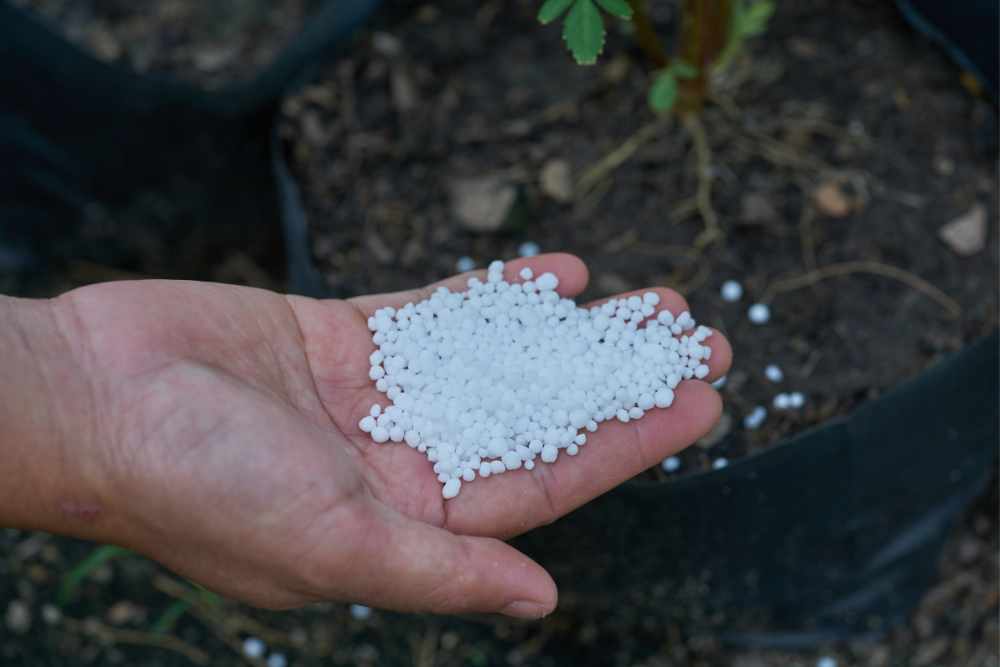
Wait until the ground has warmed and your last frost date is less than a week away. The sensitive new growth will be less likely to be killed by frost as a result of this. The optimal time to begin fertilizing vegetable plants is when they are planted. Adding nutrients to the soil in the planting hole prepares the ground for the success of a vegetable plant. Then, fill each planting hole with natural nutrients to provide the plant with long-lasting power.
A healthy dosage of compost and a few tablespoons of worm castings and coffee grinds provide plants with a virtual cornucopia of balanced power. In the spring, many gardeners use a general-purpose fertilizer (either an evenly balanced fertilizer or one with a little higher nitrogen content). For veggies, incorporate fertilizer several inches deep into the soil.
Apply fertilizer lightly into the soil around the vegetable plants for perennials. Fertilizer applications on a regular basis maintain vegetable plants healthy. Fertilizers can benefit plants that are growing slowly or are turning yellow. Too much fertilizer can cause plants to burn. Vegetable plants grown in well-drained soil require frequent feeding.
Vegetable Fertilizer Guide
- Beans – Pre-plant – use 5-10-10, 3-4″ deep, at a rate of 1 1/2 lb. per 100 sq. ft. for beans. Every 3-4 weeks, apply 1 tablespoon of 5-10-10 to each plant, or a big scoop of rotting manure.
- Beet – Pre-plant – aged manure or compost into the top 8″ of each 20-foot row, or 3-4 cups 5-10-10 into the top 4- 6″ of each 20-foot row. Side-dress with 2 cups 10-10-10 per 20-foot row if growing slowly.
- Broccoli – Pre-plant – 3-4 lb. 5-10-10 per 100 sq. ft. Side-dress with 1 tablespoon of high nitrogen fertilizer 3 weeks after transplant.
- Onions – Autumn- Add thick compost or manure to the soil. Pre-plant -1 lb. 10-10-10 per 20 sq. ft. Side dress with 1 lb 10-10-10 per 20-25 foot row when plants are 4-6″ tall and bulbs swell.
- Lettuce – Pre-plant – 1 lb. 10-10-10 per 25 sq. ft. Side dress – Use 1 tsp. 10-10-10 per plant 3-4 weeks after planting. It is also possible to apply fish or seaweed fertilizer.
- Cabbage – Pre-plant – 3-4 lb of 5-10-10 per 100 square feet, or 3-4 shovels of aged manure or compost. Side dress -1 lb 10-10-10 per 25-foot row, 1 month after transplant.
- Carrots – Pre-plant -1 lb. 5-10-10 per 50 sq. ft. When plants are 6″ tall, add natural fertilizer like dried manure or fish fertilizer as a side dress. Apply a 4″ thick coating of hardwood ash for potash (for sweetness).
- Celery – Fall – Generous amounts of compost and/or manure in the top three”. Side-dress with manure tea or 1 tsp of 5-10-10. every 2-3 weeks for each plant.
- Sweet Potatoes – Pre-planting weight – 3 lbs. 5-10-10 per 100 sq. feet, plus fine compost.3-4 weeks after transplanting, side-dress with 3 lbs. 5-10-10 per 100 sq ft. (If the soil is sandy, use 5 lbs.)
- Pumpkins – Mix rotting manure and a handful of 5-10-10 into the top 6-8″ of the soil before planting – side dress Use 5-10-10 on the hill and side roots.
- Cucumbers – Use enough compost or well-rotted manure before planting. 4 weeks after planting, just as the vines start to run, use 2 handfuls of compost or 1 T. 5-10-10 for each plant.
- Potatoes – Pre-plant – In an 8″ trench or hole, combine 1 lb of 5-10-10 per 25-foot row with 2 inches of soil. When hilling for the second time, use lbs of 5-10-10 per 25-foot row, or compost, seaweed, or fish emulsion.
- Tomatoes – Pre Planting rate – 3 lb. 5-10-10 per 100 sq. ft. 3 lb. Side dress – After the fruit has been set, apply 5-10-10 per 100 square feet.
- Corn – Pre-planting weight – 3-4 lb. 5-10-10 per 100 sq ft. When plants reach 8-10″ tall, apply 2 lb. of high nitrogen fertilizer (urea or ammonium sulfate) per 100 sq. ft. When silks develop, repeat the process, adding superphosphate to N.
- 15 Ingenious Kitchen Garden Ideas to Cultivate Freshness Right at Home - April 7, 2024
- 10 Top Picks Best Plants for Open Terrarium - April 2, 2024
- 21 Easy and Cheap Walkway Ideas for a Charming Garden - March 31, 2024

